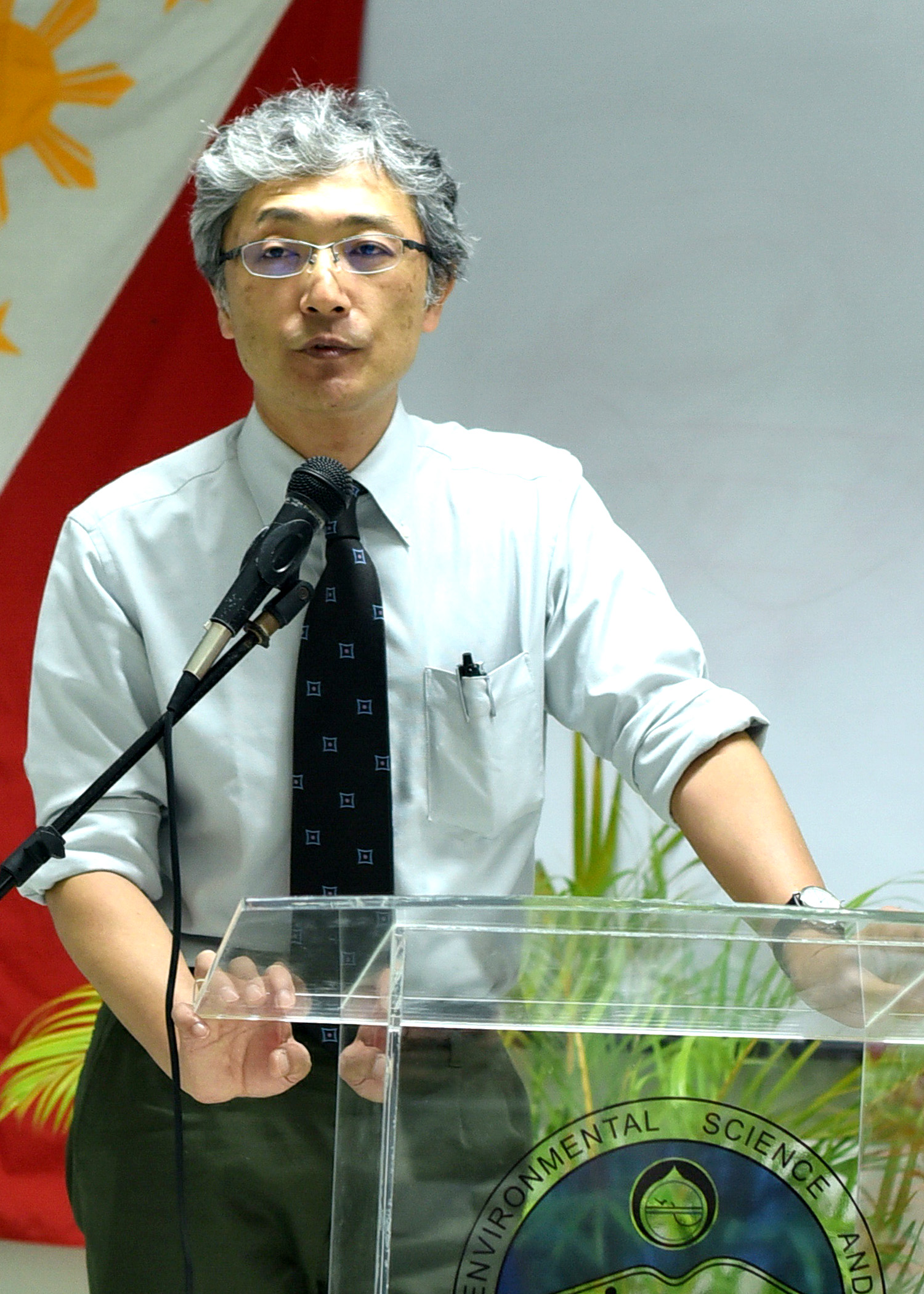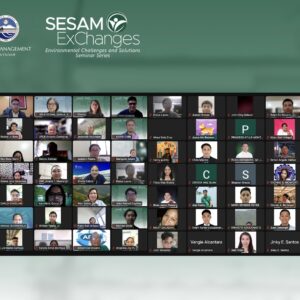Japanese Professor at SESAM to Talk About Geohazards
A geologist from Japan said that the geohazards they experienced in their country is not different the Philippines. Dr. Kohki Yoshida, Professor at the Department of Geology, Shishu University, Matsumoto, Japan visited the School of Environmental Science and Management (SESAM) to talk about the Geology and Geohazards in the Japanese Islands on March 15, 2018.
Dr. Yoshida, a geologist, with expertise in sedimentary geology, sedimentology, geochemistry and paleopedology, has research interests in the Himalayas and Oman mountains, including its weathering and monsoon history; chemical weathering and landslides; and its Triassic mega-monsoon climate records.
Shinshu University, according to Dr. Yoshida, is located at Nagano Prefecture in Honshu Island, near the Japanese Alps, where he studied quaternary rocks. He said Japan has a complex geological history and suggest that the islands were formed in an arc setting in the marginal part of the continent from the Paleozoic period. The island arc setting, which is produced by subduction of oceanic plate and collision of two island arcs, bring active volcanism and big earthquakes to inland and offshore fault activities. He said that the sudden eruption of Mt. Ontake in 2014, and just recently, eruptions of Mt. Kusatsu-Shinare and Mt. Shinmoedake, shows that Japan has an active geology.
Based on his study, the Japanese Islands is a volcanic arc from the Mesozoic to the present. Towards Japan, the Philippine Plate moves 2.5 cm per year, while the Pacific Plate move 8.5 cm per year. “The probability of being hit by a big earthquake is high in the Pacific side of the Japanese Islands due to the movements… Tokyo, Nagoya and Matsumoto show 26 to 38% probability in the next 50 years”, Dr. Yoshida said.
“It is important to discuss with citizens across academic boundaries, we have carried out many activities to consider disaster prevention so far with various generations”, Dr. Yoshida stressed.
Dr. Yoshida pointed out that in terms of preparedness, Japanese people are very familiar with disasters that happens year-in and year-out. “Similar to the Philippines, we also have typhoons, heavy rains, frequent earthquakes and volcanic eruptions, and our people knows the history of natural disasters that happens in their respective vicinities”, he added.
He also took the opportunity to invite SESAM faculty, staff and students to attend the symposium “How to live with nature” in Matsumoto City, Nagano Prefecture, Japan on March 2020. He said Shinshu University started a project for the improvement communication skills in science and technology. It aims to create communities in which people from different cultural backgrounds and generations to discuss the way we should live with nature. Dr. Yoshida encouraged students to present researches in natural hazards on the upcoming symposium.







